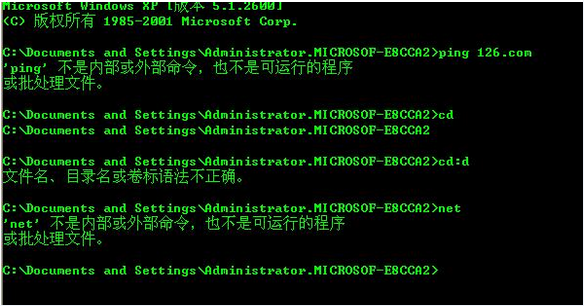 Operation and Maintenance
Operation and Maintenance
 Linux Operation and Maintenance
Linux Operation and Maintenance
 10 recommended articles about command summary
10 recommended articles about command summary
10 recommended articles about command summary
Jun 14, 2017 pm 03:32 PMI have been using ubuntu before. Installing and uninstalling software is basically using apt-get, which is very simple, and the software dependencies encountered in the process will be automatically handled for us, similar to a fool-proof installation. In addition, under the Linux operating system, almost all software can be installed, uninstalled and managed through RPM. The full name of RPM is Redhat Package Manager, which is a software proposed by Redhat Company for managing software packages under Linux. When installing Linux, except for a few core modules, almost all other modules are installed through RPM. RPM has five operating modes: installation, uninstallation, upgrade, query and verification. RPM installation operation command: rpm -i The name of the package file to be installed is as follows: rpm -i example.rpm installs the example.rpm package; rpm -iv example.rpm installs the example.rpm package and displays the files being installed during the installation process Information; rpm -ivh example.rpm An

Introduction: The full name of RPM is Redhat Package Manager, which is a software proposed by Redhat Company for managing software packages under Linux. When installing Linux, except for a few core modules, almost all other modules are installed through RPM. RPM has five operating modes, namely: installation, uninstallation, upgrade, query and verification
2. Decompression of tar.gz, tar, bz2, zip, etc. under Linux , Summary of compression commands

Introduction: Compression and compression of many compressed files such as tar gz bz2 tgz z under Linux For the decompression method, friends who need it can refer to
3. Summary of common commands for MySQL database backup and restoration
Introduction: A summary of common commands for MySQL database backup and restoration. Friends who are learning mysql can refer to
4. MYSQL Summary of commands to change root password
Introduction: A summary of the MYSQL root password modification command, friends in need can refer to it.
5. Summary of ten time-saving MySQL commands
Introduction: The editor has accumulated some experience at work MySQL command line client tips, these tips will more or less help you save a lot of time.
6. Summary of commonly used commands for MySQL database management
Introduction: MySQL database is an open source relationship Type database management system, MySQL database system uses the most commonly used database management language - Structured Query Language (SQL) for database management. MySQL database management has its own unique commands. The following is an introduction to the commonly used commands for MySQL database management.
7. Summary of common SQL Server management commands
Introduction: Friends who need to manage sql server need to master , you can save it for future use
8. MySQL import and export .sql files and summary of common commands
Introduction: Directly importing *.sql scripts into MySQL Qurey Brower cannot execute multiple sql commands at one time. The command to execute sql files in mysql: mysql source c:\test.sql; Attached is the common mysql command: ( 1) Connect to MYSQL: Format: mysql -h host address -u username -p user password 1. Example 1: Connect to MYSQL on this machine
9. Summary of MySQL index operation commands
Introduction: Create an index The syntax for creating an index is: CREATE [UNIQUE|FULLTEXT|SPATIAL] INDEX index_name [USING index_type] ON tbl_name (index_col_name,. ..) index_col_name: col_name [(length)] [ASC | DESC] For CHAR and VARCHAR columns, you can create an index using only part of a column. When creating an index
10. Summary of commonly used commands for MySQL database operations
Introduction: The simplest way to create a database: CREATE DATABASE my_db; or: CREATE DATABASE IF NOT EXISTS my_db; Create a utf8-encoded database: CREATE DATABASE IF NOT EXISTS my_db default character set utf8 COLLATE utf8_general_ci; Then all data created under this database
[Related Q&A recommendations] :
The above is the detailed content of 10 recommended articles about command summary. For more information, please follow other related articles on the PHP Chinese website!

Hot Article

Hot tools Tags

Hot Article

Hot Article Tags

Notepad++7.3.1
Easy-to-use and free code editor

SublimeText3 Chinese version
Chinese version, very easy to use

Zend Studio 13.0.1
Powerful PHP integrated development environment

Dreamweaver CS6
Visual web development tools

SublimeText3 Mac version
God-level code editing software (SublimeText3)

Hot Topics
 Tutorial on finding keywords for common Linux commands
Mar 05, 2025 am 11:45 AM
Tutorial on finding keywords for common Linux commands
Mar 05, 2025 am 11:45 AM
Tutorial on finding keywords for common Linux commands
 How do I configure SELinux or AppArmor to enhance security in Linux?
Mar 12, 2025 pm 06:59 PM
How do I configure SELinux or AppArmor to enhance security in Linux?
Mar 12, 2025 pm 06:59 PM
How do I configure SELinux or AppArmor to enhance security in Linux?
 Work content of Linux operation and maintenance engineers What does Linux operation and maintenance engineers do?
Mar 05, 2025 am 11:37 AM
Work content of Linux operation and maintenance engineers What does Linux operation and maintenance engineers do?
Mar 05, 2025 am 11:37 AM
Work content of Linux operation and maintenance engineers What does Linux operation and maintenance engineers do?
 How do I back up and restore a Linux system?
Mar 12, 2025 pm 07:01 PM
How do I back up and restore a Linux system?
Mar 12, 2025 pm 07:01 PM
How do I back up and restore a Linux system?
 How do I monitor system performance in Linux using tools like top, htop, and vmstat?
Mar 17, 2025 pm 05:28 PM
How do I monitor system performance in Linux using tools like top, htop, and vmstat?
Mar 17, 2025 pm 05:28 PM
How do I monitor system performance in Linux using tools like top, htop, and vmstat?
 Methods for uploading files for common Linux commands
Mar 05, 2025 am 11:42 AM
Methods for uploading files for common Linux commands
Mar 05, 2025 am 11:42 AM
Methods for uploading files for common Linux commands
 How do I configure a virtual private network (VPN) in Linux using OpenVPN or WireGuard?
Mar 12, 2025 pm 07:02 PM
How do I configure a virtual private network (VPN) in Linux using OpenVPN or WireGuard?
Mar 12, 2025 pm 07:02 PM
How do I configure a virtual private network (VPN) in Linux using OpenVPN or WireGuard?
 How do I use regular expressions (regex) in Linux for pattern matching?
Mar 17, 2025 pm 05:25 PM
How do I use regular expressions (regex) in Linux for pattern matching?
Mar 17, 2025 pm 05:25 PM
How do I use regular expressions (regex) in Linux for pattern matching?






